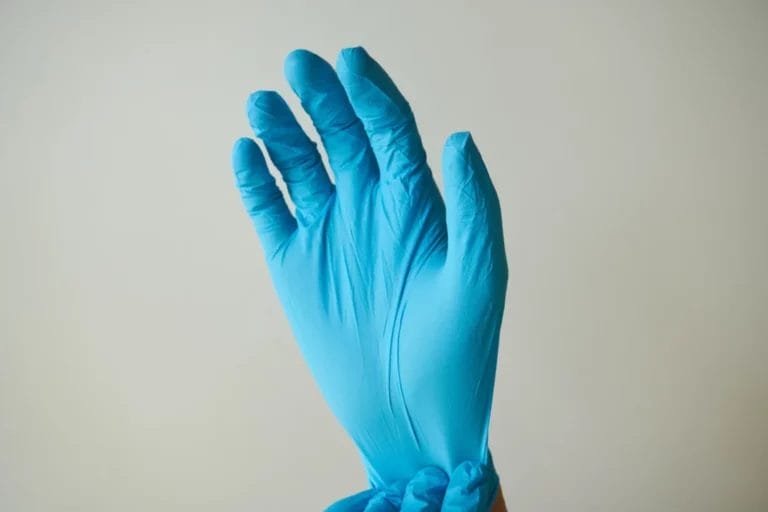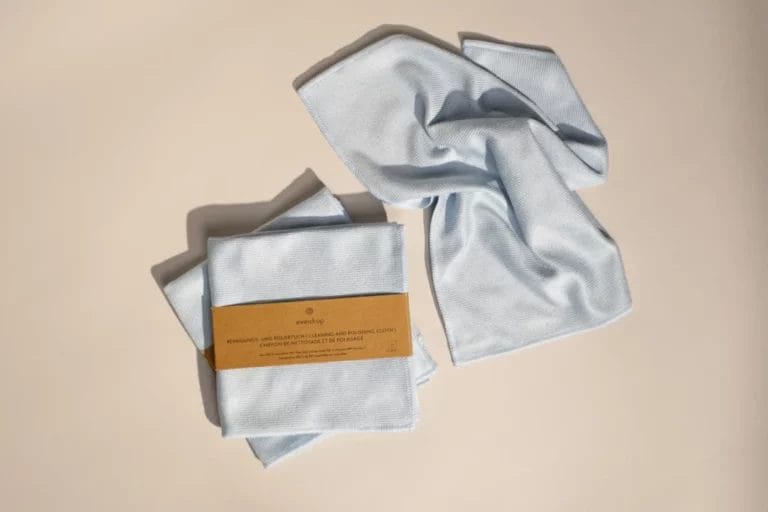7 PVC Alternatives That Are Eco Friendly
Looking for eco friendly alternatives to PVC? These seven materials are a great place to start.
- Bamboo
- Polypropylene
- Polyethylene Terephthalate
- Paper-Based Materials
- Polylactic Acid
- Wool Felt
- Cellulose Acetate Bioplastic
In recent years, environmental consciousness has taken off with more people looking to use eco-friendly materials. PVC, while it may seem like an obvious choice for certain projects, is infamously difficult to recycle and breaks down into toxic compounds when burned.
If you ever asked yourself, is “pvc eco friendly” then let’s dive in deeper into the best alternatives.
PVC-Free Alternatives
Thankfully, there are plenty of sustainable PVC alternatives that make going green viable without sacrificing any features or quality. Some of the best PVC alternatives include bamboo, polypropylene, polyethylene terephthalate (PET), paper-based materials, polylactic acid (PLA), wool felt, and cellulose acetate bioplastic.
Bamboo is especially popular as it looks great while also being highly biodegradable. PET and PLA have an advantage over PVC in the fact that they’re both totally recyclable. Paper-based materials are not only renewable but can be very strong depending on the type used.
Get Your Hand on Your Eco-Friendly Living Starter Guide!
Wool felt has been used for centuries for its durability and water resistance properties. Finally, cellulose acetate bioplastic does an admirable job of providing rigidity without releasing toxic chemicals when decomposed. All these PVC alternatives offer an excellent way to keep your project sustainable without making big sacrifices in terms of quality or features!

Bamboo
Bamboo and PVC are two building materials that people often compare. While both of these materials are affordable, Bamboo offers distinct advantages over PVC because it is more aesthetically pleasing and has a greater impact on the environment.
Aesthetically speaking, Bamboo is known for its warm and natural look, giving it an advantage in construction projects where an attractive design is important. Additionally, Bamboo does not contain any toxins making it healthier for both the environment and people using the structure. In comparison, PVC requires more effort to be recycled and can even release toxic chemicals into the air if incinerated. Therefore, if you’re looking for a sustainable material to use in your next project, Bamboo is by far the better choice.
Polypropylene
Polypropylene is an increasingly popular material that is being chosen over traditional PVC in a variety of applications. This versatile product is known for its durability, aesthetics, and cost-efficiency. The material is favored in the transportation industry due to its significant weight-saving benefits compared with PVC, leading to improved fuel economy and reduced emissions.
It also has superior sound insulating properties which helps keep sound levels in passenger cabins low while reducing noise pollution outside. Polypropylene can last longer than traditional materials without requiring maintenance or replacements, which translates into financial savings over time.
Its versatility makes it possible to be formed into different shapes, making it well-suited for both interior and exterior automotive applications. Overall, polypropylene’s attributes make it a prime choice for industry professionals as well as consumers when compared with other materials like PVC.
Polyethylene Terephthalate
Recently, there has been a growing trend in the plastics industry of replacing PVC with Polyethylene Terephthalate (PET). This move toward PET is being driven by factors such as its higher level of recyclability, greater flexibility and shock resistance, and better dimensional stability.
Plus, many companies like the fact that PET is safer to use since it’s free from chlorine and phthalates―two elements found in PVC which make it potentially hazardous. Further, PET has a lower thermal conductivity than PVC, meaning that it holds temperatures better. For these reasons and more, PET provides an ideal long-term substitute for PVC in many sectors.
Paper-Based Materials
When looking to purchase flooring or doors, there are two popular material options: paper-based materials and PVC. Paper-based materials, such as cardboard and corrugated cardboard, offer a unique aesthetic due to their natural textures when polished properly. Additionally, they present an eco-friendly choice since they are fully biodegradable; this reduced environmental impact provides a considerable benefit.
Polylactic Acid
Polylactic acid (PLA) is a rapidly renewable plastic material made from fermented plant sugars like corn, tapioca, and sugarcane. It is considered to be an eco-friendly alternative to some of the traditional plastics like PVC which releases hazardous toxins when it eventually decomposes. Unlike PVC, PLA releases carbon dioxide instead of methane which can be trapped in the atmosphere for centuries and contribute to global warming.
Additionally, PLA is entirely edible, biodegradable, and compostable making it suitable for food packaging applications. This means that when disposed of correctly, it immediately starts breaking down and can eventually become nourishment for new plants as fertilizer or biomass energy. The versatility, affordability, and environmental friendliness of PLA make it a fantastic option for sustainable production processes worldwide!
Wool Felt
Wool felt is becoming a popular go-to material for eco-conscious consumers due to its advantageous environmental profile. Wool felt is produced from all-natural materials, namely sheep’s wool itself. By comparison, PVC is a manmade material that is derived from petroleum and other chemical compounds, meaning it takes an enormous amount of energy consumption to create and produces volatile organic compounds (VOCs) when fabricated into fabrics or products.
Additionally, wool felts are designed to last longer, reducing the frequency and eventual accumulation of waste as compared to PVC fabrics. This makes wool felt a much better choice if you’re looking for an environmentally friendly option.

Cellulose Acetate Bioplastic
Cellulose acetate bioplastics are a cost-effective, eco-friendly alternative to more traditional forms of plastic. Unlike Polyvinyl Chloride (PVC) plastics, bioplastics such as cellulose acetate offer the unique benefit of being derived from renewable resources like wood pulp and cotton fibers.
This approach drastically reduces energy consumption, leading to a reduced carbon footprint. Furthermore, cellulose acetate can be composted or recycled at the end of its use cycle while PVC plastics rely on expensive and energy-intensive recycling processes.
As manufacturers and consumers alike become increasingly more cognizant of their environmental impacts, choosing bioplastics over their non-biodegradable counterparts has become an economically sound decision that helps protect the environment from further damage.
Prices Of PVC-Free Bags
The launch of PVC-free bags at a competitive price has seen a surge in environmental consciousness in the past few years. These durable and user-friendly bags offer an ethically sound alternative to traditional PVC bags, being both waterproof and resistant to tearing over time. They are particularly popular amongst eco-friendly canteen owners, who can benefit from the cheaper materials used during production.
On top of this, the eye-catching colors available for hi-vis designs make them attractive for promotional purposes! Overall, what’s not to love about these bags? They’re affordable, practical, and undeniably sustainable – making them an accessible way for businesses to contribute to a greener future.






